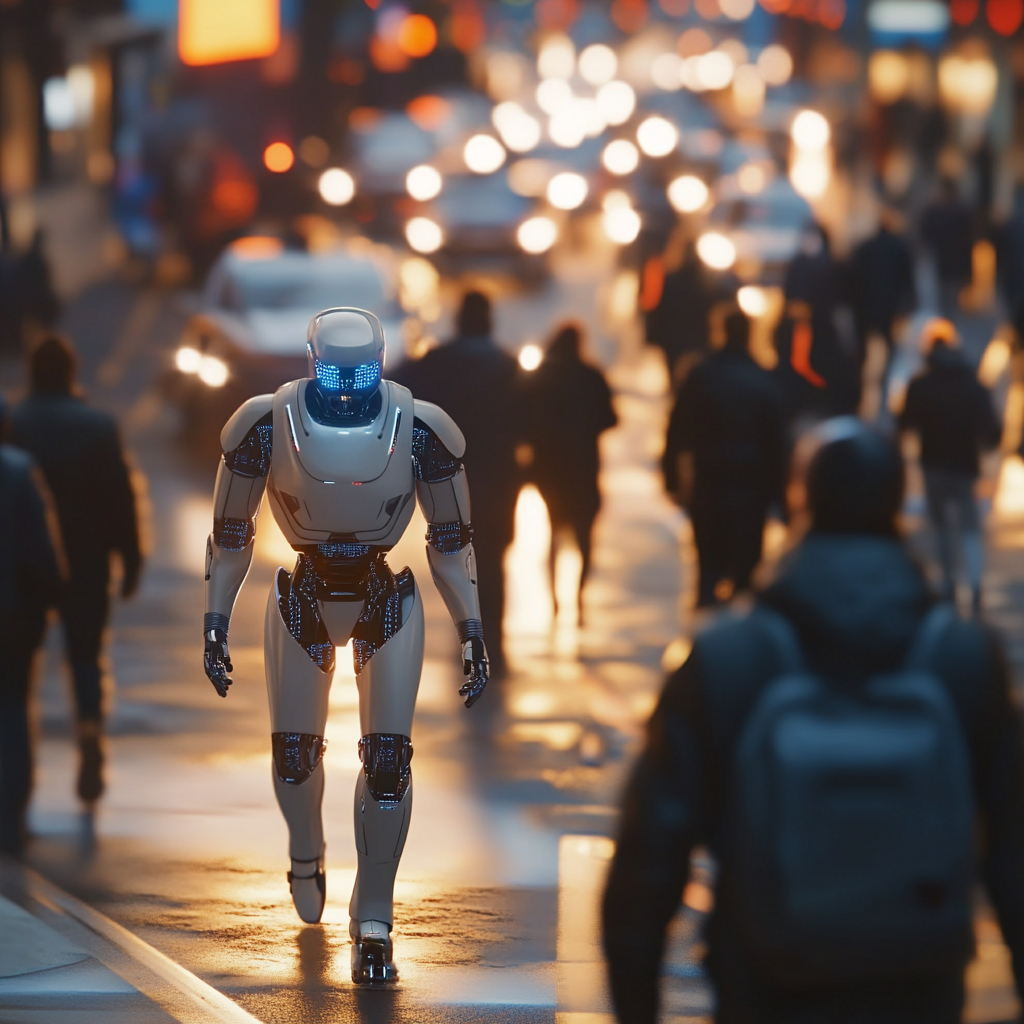
Navigating Crowds: Robots’ Dual Strategy
Navigating the Crowd: How Robots Master the Art of Independent and Cooperative Behavior
Picture this: you’re standing in a bustling shopping mall, where people weave in and out like vibrant threads in a busy tapestry. Suddenly, a robot appears, deftly maneuvering through the chaos with the elegance of a dancer. You're awed—how on earth can a metal box navigate so seamlessly among the sea of humans? Well, let’s unravel this mystery together, because the world of robots and autonomy is far from a tale of futuristic dreams. It’s happening right now, and the secrets behind it are nothing short of spectacular.
First, let’s talk about a fascinating little hiccup the robotics world has dubbed the "freezing robot problem." Imagine this scenario: a robot, minding its business in a crowded environment, suddenly comes to a halt, paralyzed by indecision. Instead of making its way forward like a seasoned New Yorker, it stutters and hesitates, not knowing how to proceed through the masses. This isn't just embarrassing; it’s downright dysfunctional. Traditional algorithms often get overwhelmed, leading robots to either freeze in place or engage in clumsy maneuvers to avoid humans. Spoiler alert: this is not the kind of behavior we want our robots exhibiting when they're entrusted with the task of navigating crowded places like airports or, heaven forbid, the office coffee machine line.
Enter the revolutionary concept of cooperative navigation methodology, which is akin to teaching a robot the art of social grace. Research from the California Institute of Technology led by the brilliant Pete Trautman introduces the concept of interacting Gaussian processes. Say what? In plain English: these processes allow robots to figure out how to share space with humans smoothly. The magic happens through real-time adjustments of their paths, enabling them to mitigate collisions while still respecting the human flow. Trautman’s research, tested in the busy dining hall at Caltech, showcased a robot engaging with hundreds of hungry students, navigating as fluidly as a human teleoperator. We can now say goodbye to the “robot freeze” and hello to synchronized movement!
So, what are the key takeaways from this twist on robots’ social prowess? First off, efficient navigation reigns supreme. Robots can alternate between acting independently and cooperating with their feathered human friends, dynamically adjusting their routes to dodge collisions and make space for others. This is not just theory; it’s been proven. In real-world experiments, the aforementioned cooperative strategies have outperformed noncooperative plans—especially in crowded situations—like during Black Friday sales (where one would be wise to keep their purse close and their wits closer).
Then we must consider the vast implications of this technology. Think about it: what if your delivery robot could zip through a parking lot filled with distracted shoppers without causing chaos? Or what if warehouse robots could work alongside humans without colliding with their feet—yes, no more stepping on toes! The applications range far and wide, encompassing everything from service robots in public spaces to robots at home that need to dart around like a hyperactive puppy navigating an indoor obstacle course.
But how exactly does a machine learn these fancy footworks? Enter the stage, the unsung hero: machine learning. The “Estimate, Extrapolate, and Situate” (EES) algorithm—a fancy title for a very clever idea—was born out of the minds at MIT’s Computer Science and Artificial Intelligence Laboratory. This algorithm helps robots practice and hone their skills autonomously. What’s even more exciting is that it helps robots specialize in tasks like sorting objects or, if we’re feeling fancy, sweeping—basically, doing the chores you dread. Boston Dynamics’ Spot quadruped robot has shown itself to be quite the prodigy, picking up tasks at an impressive pace thanks to this algorithm.
Now, let’s gaze into the crystal ball for a moment. As robots increasingly become part of our daily lives, the ability to learn and adapt independently will be crucial. The future is bright with ambition. Research is diving into blending the realms of real and virtual practice. This innovative approach could enhance training, improve performance, and make robots even more adept at navigating the human world. Imagine a world where robots no longer need to awkwardly assess situations like a teenager at a school dance!
But we can’t all just sit back and enjoy the show; it’s time to recognize the significance of robots mastering the art of independent and cooperative behavior. This leap forward enhances safety and efficiency, paving the way for a diversified array of autonomous machines. Whether it's a robot friend bringing you your mail or an army of warehouse bots working in harmony, it stands to transform numerous sectors—all while avoiding the dreaded “freeze.”
And here we stand at the precipice of a bold new world, where humans and robots can coexist without trepidation. It’s exhilarating! But don’t stop here; the orbit of AI, robotics, and automation is ever-expanding, with more developments on the horizon.
So, are you ready to dive further into this universe? Do you want to ride the wave of the latest news on neural networks and automation? We’re here to keep you informed, so take action today! Subscribe to our Telegram channel: @channel_neirotoken and join the conversation in a digital age that promises to be as fascinating as it is revolutionary. Let’s walk this exciting journey together and ensure we’re all on the cutting edge!

